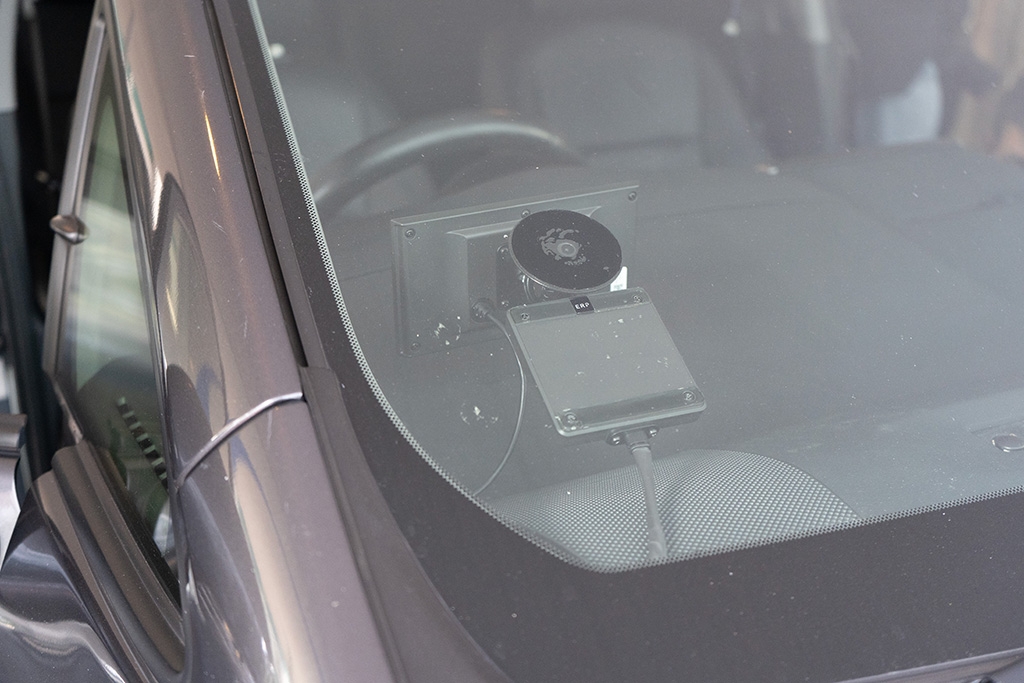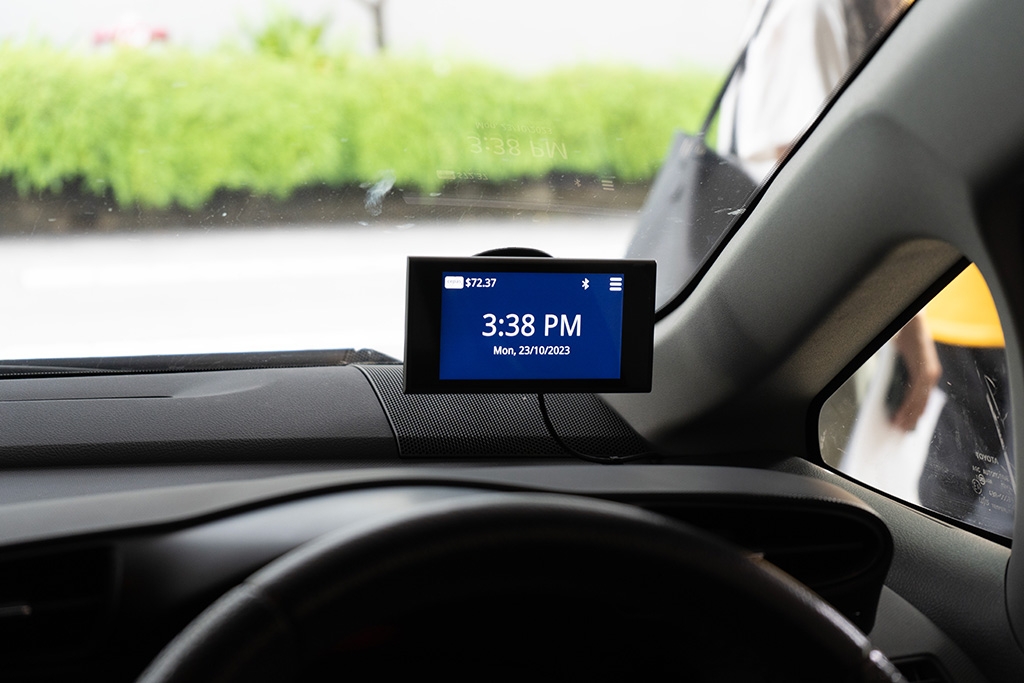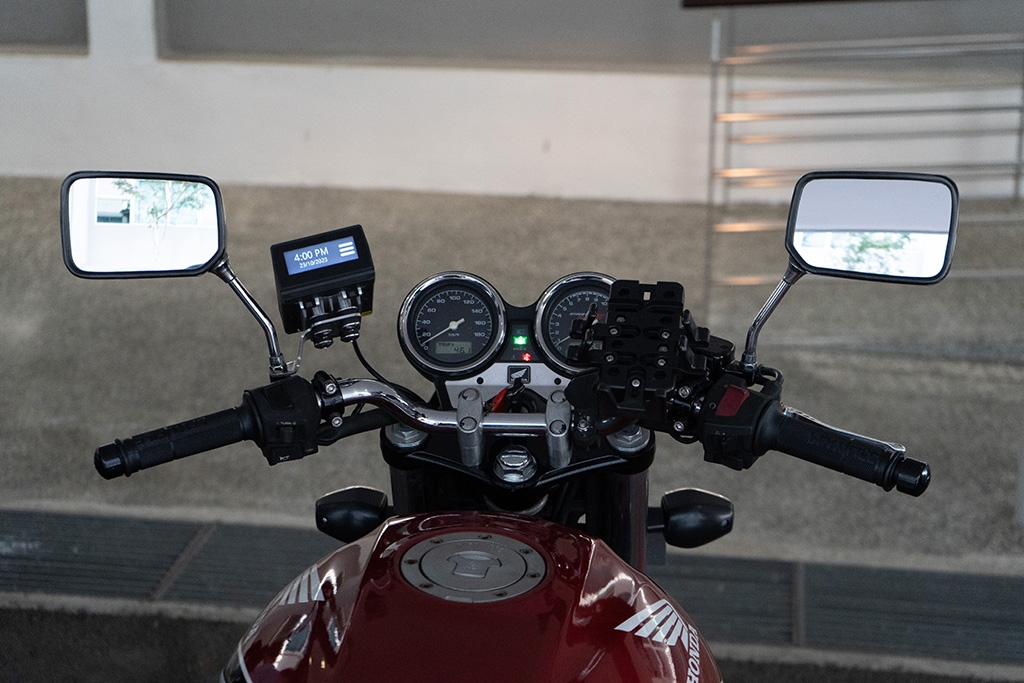Installation of ERP 2.0 on-board units starts this November
23 Oct 2023|40,142 views
The On-Board Unit (OBU) that the LTA first announced in 2020 for implementation under the new ERP system will be rolled out in phases beginning November 2023.
The OBU, which is based on a Global Navigation Satellite System (GNSS), will replace the current in-vehicle unit (IU) as Singapore transitions to ERP 2.0. LTA said this move is needed as the existing ERP system approaches the end of its lifespan, having been in operation for 25 years.
From 1 November 2023, installations will be done progressively, starting with fleet vehicles registered to either a company or an organisation. The OBU will be installed in new vehicles from the first quarter of 2024, while all other existing vehicles will be scheduled for installation in batches depending on the age of the vehicles.
Owners of eligible Singapore-registered vehicles will be notified by LTA via letter, email and/or SMS when it is their turn, with instructions on how they can schedule an installation appointment. Installation of the new OBU will be free of charge if completed within the two-month period stated in the notification.
All Singapore-registered vehicles should be fitted with an OBU except for those that will be de-registered in the course of the OBU installation. The authority expects the OBU exercise to be completed by the end of 2025.
Unlike the all-familiar IU, a standard OBU comprises three components - a processing unit, an antenna, and a touchscreen display. The exception would be that for motorcycles, as these parts are integrated into a single-piece OBU to retain the form factor of the IU that motorcyclists are used to.
The new touchscreen display will inform motorists of ERP-related data, such as ERP charges and their card balance. It will also feed motorists with real-time road and traffic updates, including oncoming Silver Zones, School Zones, speed cameras, and bus lanes.
Motorists have the option not to install the touchscreen display, LTA said, having taken in public feedback following its reveal of the OBU in 2020. In that instance, motorists would have to download LTA's ERP 2.0 application on their smartphones to access key OBU information. Motorists may alternatively download third-party applications listed on LTA's OneMotoring website.
To enjoy the full range of OBU features, such as payment for roadside parking, the LTA encourages motorists to install all three components. The touchscreen display may support additional functionalities subsequently when all vehicles have transitioned to ERP 2.0.
As the OBU is designed to work with existing ERP and parking gantries, no adjustments will be made to ERP charges during the transition period. LTA has also released a software development kit (SDK) to allow software developers to develop smartphone applications that integrate and display ERP 2.0 data.
The authority said strict security safeguards are in place to ensure such applications are only able to receive information from the OBU but will not be able to read or make any changes to the data.
The On-Board Unit (OBU) that the LTA first announced in 2020 for implementation under the new ERP system will be rolled out in phases beginning November 2023.
The OBU, which is based on a Global Navigation Satellite System (GNSS), will replace the current in-vehicle unit (IU) as Singapore transitions to ERP 2.0. LTA said this move is needed as the existing ERP system approaches the end of its lifespan, having been in operation for 25 years.
From 1 November 2023, installations will be done progressively, starting with fleet vehicles registered to either a company or an organisation. The OBU will be installed in new vehicles from the first quarter of 2024, while all other existing vehicles will be scheduled for installation in batches depending on the age of the vehicles.
Owners of eligible Singapore-registered vehicles will be notified by LTA via letter, email and/or SMS when it is their turn, with instructions on how they can schedule an installation appointment. Installation of the new OBU will be free of charge if completed within the two-month period stated in the notification.
All Singapore-registered vehicles should be fitted with an OBU except for those that will be de-registered in the course of the OBU installation. The authority expects the OBU exercise to be completed by the end of 2025.
Unlike the all-familiar IU, a standard OBU comprises three components - a processing unit, an antenna, and a touchscreen display. The exception would be that for motorcycles, as these parts are integrated into a single-piece OBU to retain the form factor of the IU that motorcyclists are used to.
The new touchscreen display will inform motorists of ERP-related data, such as ERP charges and their card balance. It will also feed motorists with real-time road and traffic updates, including oncoming Silver Zones, School Zones, speed cameras, and bus lanes.
Motorists have the option not to install the touchscreen display, LTA said, having taken in public feedback following its reveal of the OBU in 2020. In that instance, motorists would have to download LTA's ERP 2.0 application on their smartphones to access key OBU information. Motorists may alternatively download third-party applications listed on LTA's OneMotoring website.
To enjoy the full range of OBU features, such as payment for roadside parking, the LTA encourages motorists to install all three components. The touchscreen display may support additional functionalities subsequently when all vehicles have transitioned to ERP 2.0.
As the OBU is designed to work with existing ERP and parking gantries, no adjustments will be made to ERP charges during the transition period. LTA has also released a software development kit (SDK) to allow software developers to develop smartphone applications that integrate and display ERP 2.0 data.
The authority said strict security safeguards are in place to ensure such applications are only able to receive information from the OBU but will not be able to read or make any changes to the data.
Latest COE Prices
October 2024 | 2nd BIDDING
NEXT TENDER: 06 Nov 2024
CAT A$102,900
CAT B$113,890
CAT C$72,939
CAT E$114,700
View Full Results Thank You For Your Subscription.




































